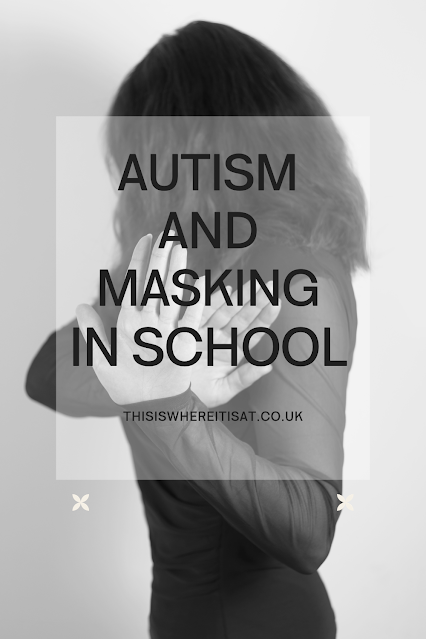Hey readers,
For many students with autism, the school environment can be both a place of learning and a space where they navigate the intricate art of masking.
In this blog post, we'll explore the concept of masking in the school context, its impact, and the importance of creating inclusive environments.
Understanding Masking.
Masking involves consciously or unconsciously suppressing one's true self to conform to societal norms and expectations. While this strategy can help individuals with autism blend in and interact more easily, it comes at a cost.
Masking can lead to mental and emotional exhaustion, heightened anxiety, and a disconnection from one's authentic identity.
Masking at School.
The school environment presents numerous social challenges that may encourage masking behaviour:
1. Social Expectations: School settings come with a multitude of unspoken social rules that individuals with autism might struggle to grasp intuitively.
2. Peer Interactions: Navigating peer relationships, group activities, and small talk can be overwhelming for students with autism.
3. Classroom Dynamics: The fast-paced nature of lessons, transitions, and classroom discussions can be difficult to keep up with, leading to masking to avoid standing out.
4. Sensory Overload: The sensory-rich school environment can exacerbate sensory sensitivities, leading students to mask their discomfort to avoid drawing attention.
Impact of Masking.
While masking can serve as a valuable tool for social adaptation, it has potential drawbacks:
1. Mental and Emotional Strain: Constantly suppressing one's true self can lead to stress, anxiety, and emotional exhaustion.
2. Delayed Identification: Masking might delay the identification of autism in some individuals, as they appear to be coping well in social situations.
3. Misunderstanding: Others may fail to recognize the challenges faced by students who mask, leading to a lack of support or accommodations.
4. Self-Acceptance: Over time, the act of masking can erode an individual's sense of self and hinder their journey towards self-acceptance.
Creating an Inclusive Environment.
1. Educate Students and Staff: Raise awareness about autism and the concept of masking among students, teachers, and staff to foster empathy and understanding.
2. Offer Choice: Provide students with autism the choice to engage in social interactions at a pace that feels comfortable to them.
3. Designated Safe Spaces: Offer designated quiet spaces where students can retreat when sensory overload becomes overwhelming.
4. Embrace Neurodiversity: Celebrate the unique strengths and perspectives of all students, promoting a culture of inclusivity and acceptance.
Supporting Authenticity.
Recognizing the complex dance of masking in school is crucial to supporting the well-being and academic success of students with autism.
By creating an environment that values authenticity and acknowledges the diverse ways individuals experience the world, we pave the way for a more compassionate and inclusive educational journey.
Cheers for reading X









No comments